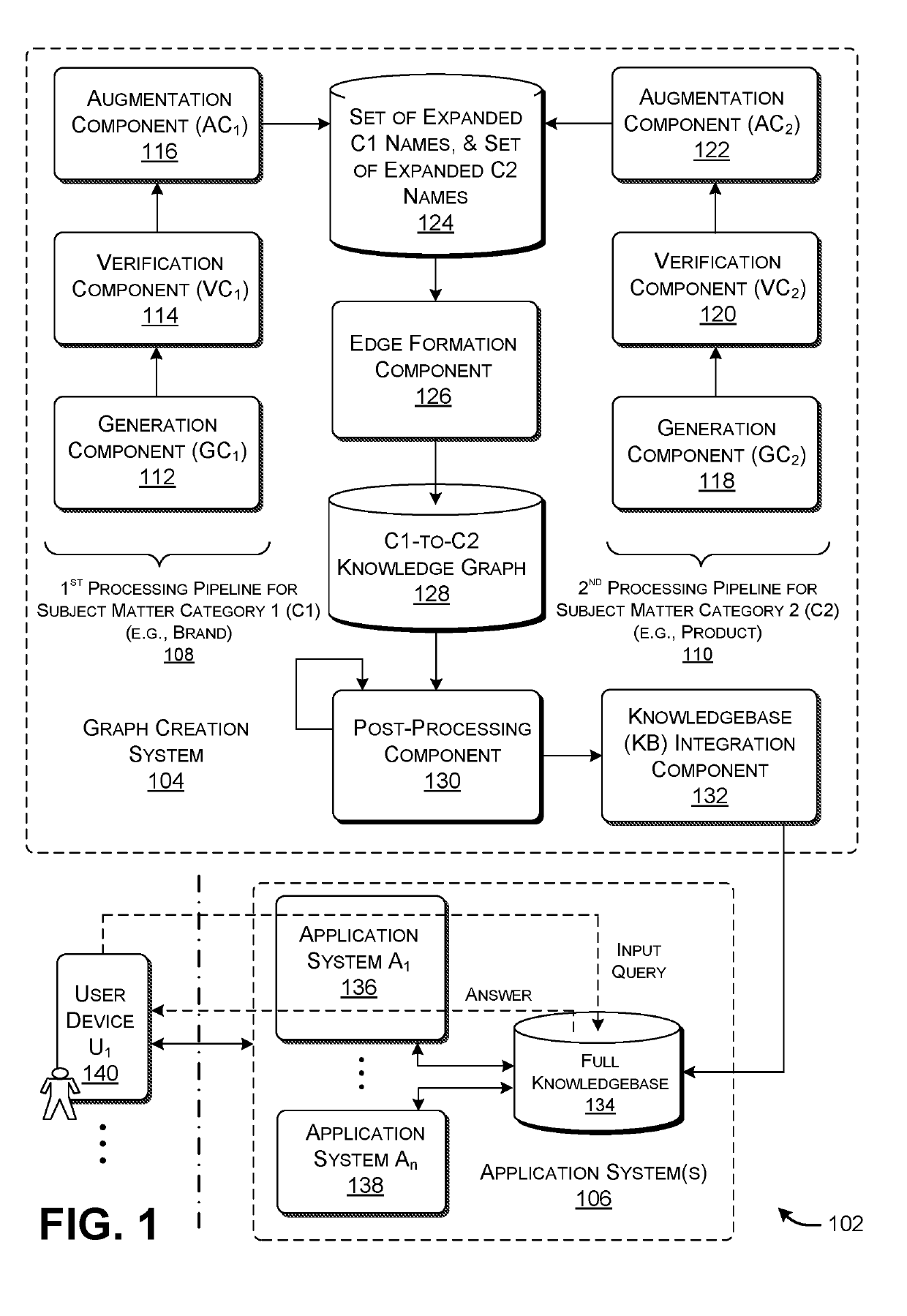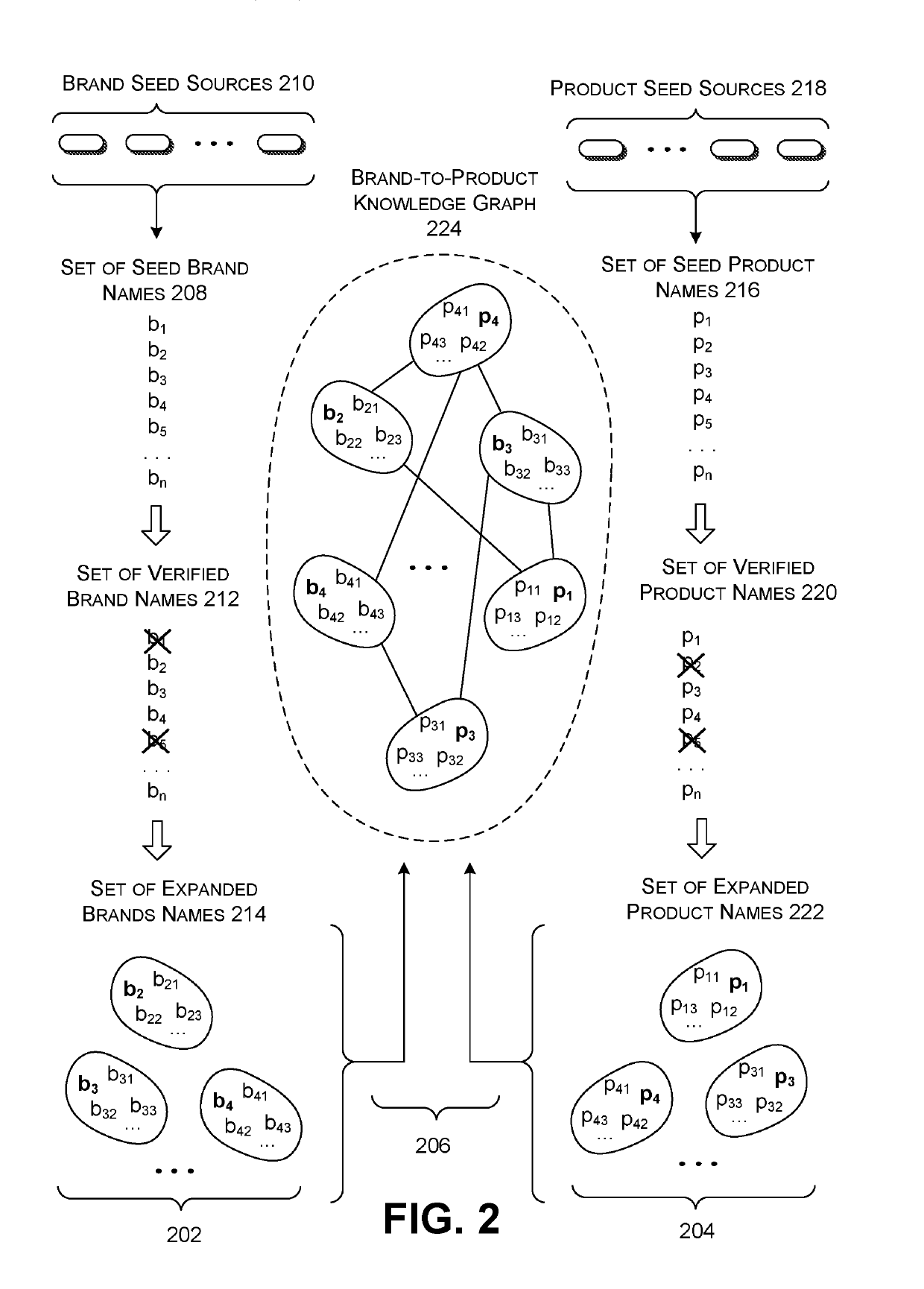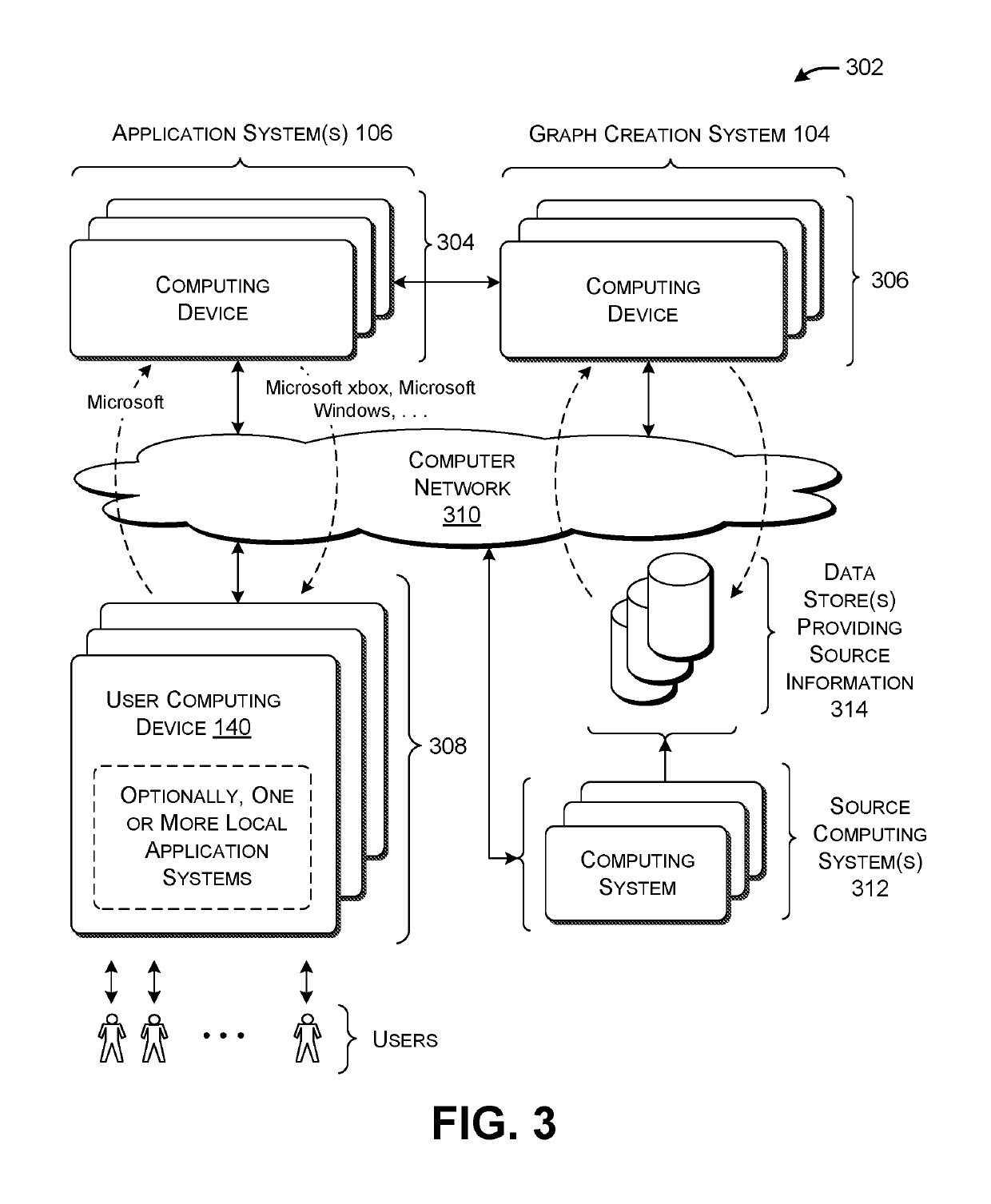Resource-Efficient Generation of a Knowledge Graph
a knowledge graph and resource-efficient technology, applied in the field of resource-efficient generation of knowledge graphs, can solve the problems of laborious task of generating knowledge graphs, otherwise not providing a fully satisfactory solution,
- Summary
- Abstract
- Description
- Claims
- Application Information
AI Technical Summary
Benefits of technology
Problems solved by technology
Method used
Image
Examples
Embodiment Construction
[0022]This disclosure is organized as follows. Section A describes a computing environment for generating and applying a knowledge graph. Section B sets forth illustrative methods which explain the operation of the computing environment of Section A. And Section C describes illustrative computing functionality that can be used to implement any aspect of the features described in Sections A and B.
[0023]As a preliminary matter, the term “hardware logic circuitry” corresponds to one or more hardware processors (e.g., CPUs, GPUs, etc.) that execute machine-readable instructions stored in a memory, and / or one or more other hardware logic components (e.g., FPGAs) that perform operations using a task-specific collection of fixed and / or programmable logic gates. Section C provides additional information regarding one implementation of the hardware logic circuitry.
[0024]The terms “component,”“unit,”“element,” etc. refer to a part of the hardware logic circuitry that performs a particular fun...
PUM
 Login to View More
Login to View More Abstract
Description
Claims
Application Information
 Login to View More
Login to View More - R&D
- Intellectual Property
- Life Sciences
- Materials
- Tech Scout
- Unparalleled Data Quality
- Higher Quality Content
- 60% Fewer Hallucinations
Browse by: Latest US Patents, China's latest patents, Technical Efficacy Thesaurus, Application Domain, Technology Topic, Popular Technical Reports.
© 2025 PatSnap. All rights reserved.Legal|Privacy policy|Modern Slavery Act Transparency Statement|Sitemap|About US| Contact US: help@patsnap.com



